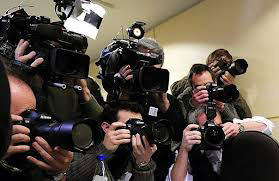Getting Harder to Report on Intelligence Agencies
This spring, the Office of the Director of National Intelligence issued new policies requiring that all public writings and remarks—even by former employees—be checked beforehand for sensitive information and circumscribing how employees can talk about classified material that’s already out in the public sphere.
 Long-time intelligence reporters say it’s too soon to say whether the directives—in effect since April, and first reported earlier this month—are specifically causing sources to clam up. But, the policies contribute to a climate where government sources are increasingly twitchy about talking with reporters, even on unclassified matters. In March, the Office of the Director of National Intelligence expressly forbade unauthorized contact with the media for all current employees of the 17 government spy agencies it oversees.
Long-time intelligence reporters say it’s too soon to say whether the directives—in effect since April, and first reported earlier this month—are specifically causing sources to clam up. But, the policies contribute to a climate where government sources are increasingly twitchy about talking with reporters, even on unclassified matters. In March, the Office of the Director of National Intelligence expressly forbade unauthorized contact with the media for all current employees of the 17 government spy agencies it oversees.
“Clearly this is part of the post-Snowden scramble to try to control the message and control information,” said Mark Mazzetti, a New York Times national security reporter and author of a recent book on the CIA.
It’s been almost a year since former National Security Agency contractor Edward Snowden began leaking documents on government surveillance “and they’re still wrestling with this,” said Mazzetti.
Steven Aftergood of the Federation of American Scientists’ Secrecy News blog, argued that the ODNI’s new policies are a step up in government control, in that they extend beyond only regulating classified information to include “sensitive” matters. The ODNI says that the new directives just reflect a consolidation of existing practices, and they’re not as inflexible as they may seem on paper.
“It is understood that there are times that former employees may receive calls for comment from the media, and there simply is not time to follow the pre-publication review process,” the ODNI wrote in a statement after the policies came to light. “You rely on people who get out of government to give a more candid assessment of what’s going on inside it,” said Mazzetti.
“We’ll have to see how it’s enforced and whether people listen to it. There will be people who will bristle at this attempt to control what they can say.”